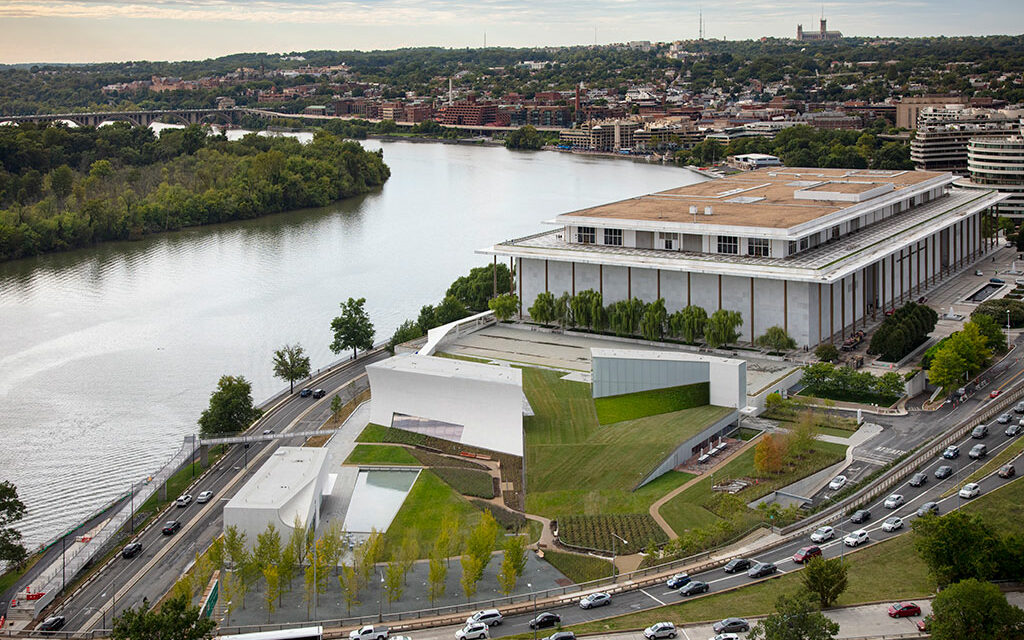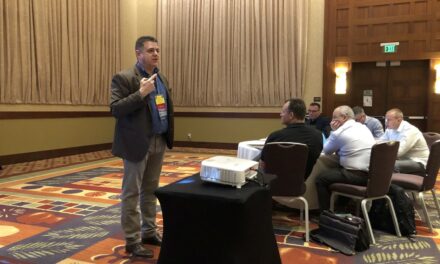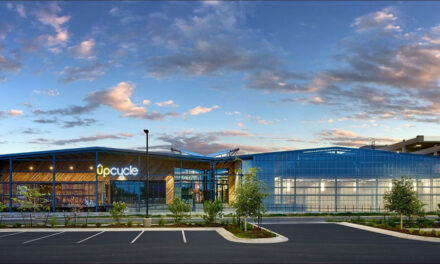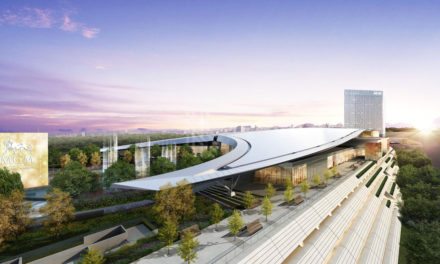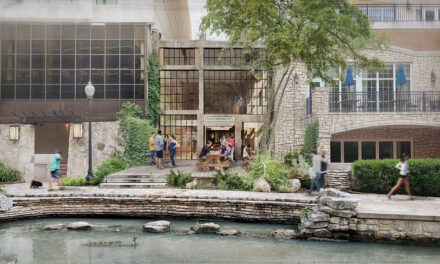As a “living memorial” for President John F. Kennedy, the Kennedy Center for the Performing Arts takes an active position among the great presidential monuments in Washington, D.C. Through public events and stimulating art, the Kennedy Center offers a place where the community can engage and interact with artists across the full spectrum of the creative process. The REACH expansion, designed by Steven Holl Architects, adds much-needed rehearsal, education, and a range of flexible indoor and outdoor spaces to allow the Kennedy Center to continue to play a leadership role in providing artistic, cultural, and enrichment opportunities.
The design for The REACH merges architecture with the landscape to expand the dimensions of a living memorial. The landscape design includes a narrative reflection on the life of President Kennedy: a grove of 35 gingko trees, which will drop their golden autumn leaves in late November, acknowledges John F. Kennedy’s position as the 35th President of the United States; and a reflecting pool and mahogany landscape deck are built in the same dimensions and mahogany boards of Kennedy’s WWII boat, the PT109.
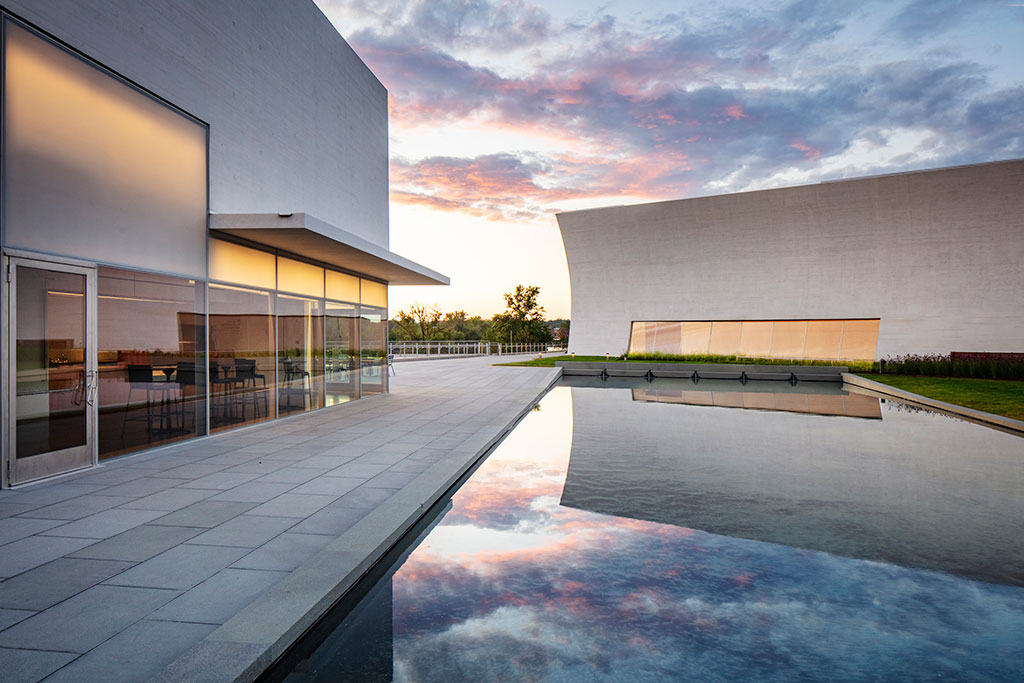
Photo credit: © Richard Barnes
In complementary/contrast to the monumental original Kennedy Center building by Edward Durell Stone, The REACH’s three pavilions are fused with the landscape. They shape outdoor spaces between them, and frame views to the Washington Monument, Lincoln Memorial and Potomac riverfront. The three pavilions are interconnected below green roofs to expand the Kennedy Center’s interior space with 72,000 sf of open studios, rehearsal and performance spaces, and dedicated arts learning spaces.
Embedding much of the expansion under a public landscape offers maximum green space to the community and gives landscape views from the interior spaces.
The open landscape provides both large and intimate spaces to gather and visit at all times of the day. Simulcast projections of live performances from within the Kennedy Center will be projected onto the north wall of the largest pavilion in front of a broad lawn. The landscape serves as a green roof over the interior spaces below, the largest in Washington, D.C. at approximately 69,000 sf. The varied gardens will provide opportunities for casual performances and events and other flexible locations for enhanced engagement, further positioning the Center as a nexus of arts, learning, and culture in the years ahead.
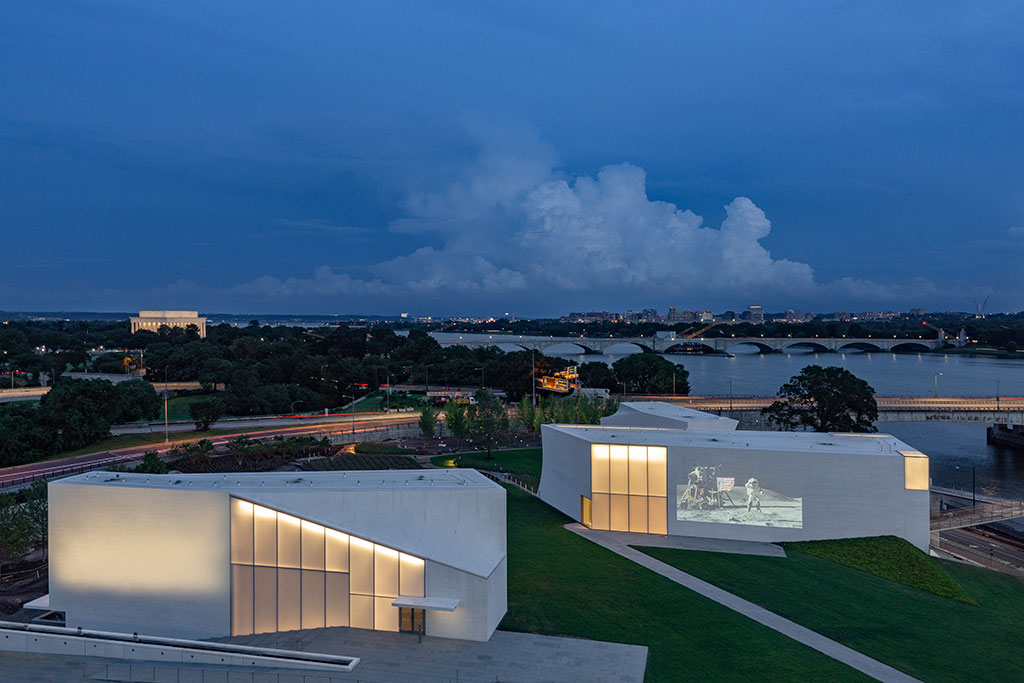
Photo credit: © Richard Barnes
The titanium white board-formed concrete pavilions engage with the landscape, gently curving to catch natural light for the interior. The concrete finish is made up of 4” tongue and groove Douglas fir boards that lined CNC plywood forms. From a distance the concrete appears monolithic and seamless but when examined up close has the scale of wooden boards that relate to the body and hand, while simultaneously showing an imprint of the building process.
While all different in form, resisting any defined geometric description, the three pavilions are connected through their ruled-surface geometry. This strategy creates a language of forms, from conical sections to hyperbolic paraboloids, a visual acoustics echoing across the pavilions, cupping space between them, and dispersing sound on the inside.
Inside the building, a newly developed crinkled concrete texture lines the walls of rehearsal and performance spaces, integrating acoustical qualities directly within the structural cast-in-place concrete walls.
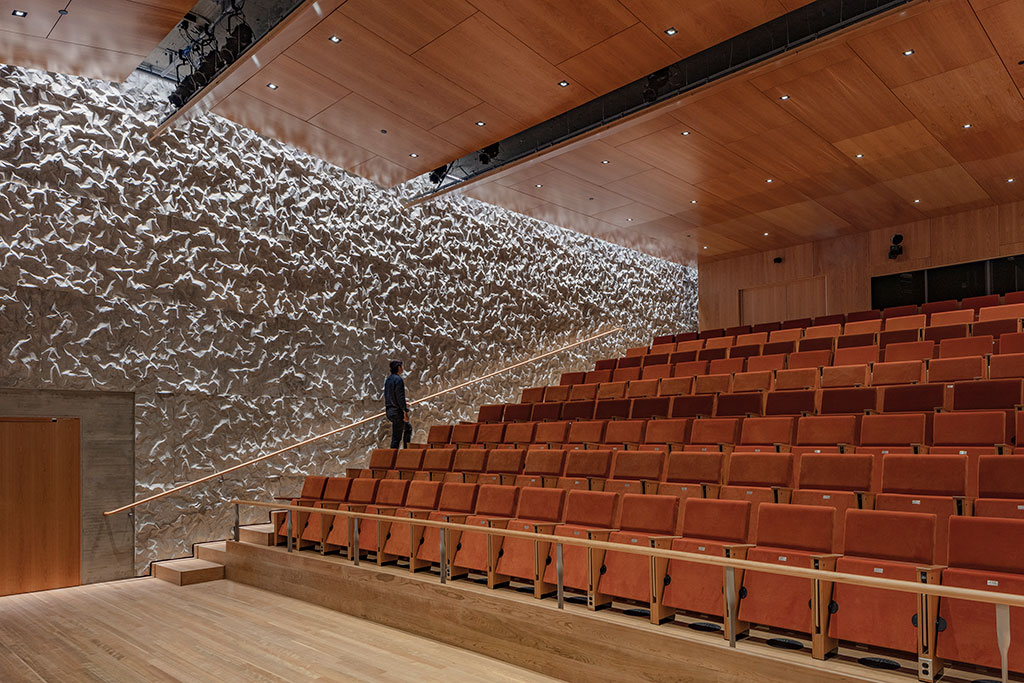
Photo credit: © Richard Barnes
Natural light is given to all spaces via translucent, clear and curved glass. Through etching the glass, and sandwiching translucent white films between layers, luminous surfaces diffuse light deep into the interior, and glow outward at night. Windows are positioned to provide views through the full depth of the interior, from the entry lobby though rehearsal and event spaces to the river and landscape beyond, encouraging creative curiosity and dynamic interaction.
With The REACH, the Kennedy Center’s direct connection to the Potomac River is finally achieved, more than 50 years after it was lost in Stone’s initial design. A new pedestrian bridge, which appears to float over the park way, allows easy access to and from the Rock Creek Trail and the Georgetown waterfront.
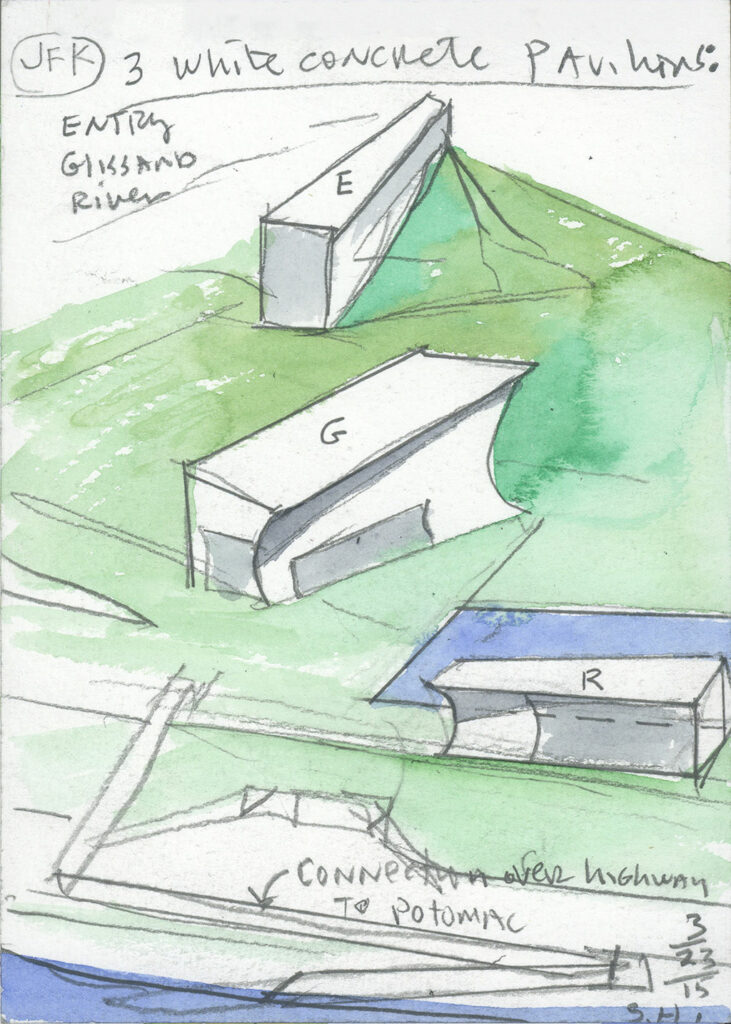
Courtesy of Steven Holl Architects
The newly expanded campus positions the Kennedy Center as a 21st century, future-oriented arts institution, and celebrates President Kennedy and his significant contribution to the arts and American culture.
Client: John F. Kennedy Center for the Performing Arts; Washington, DC, United States
2012- 2019
CREDITS
FACTS: The REACH at The Kennedy Center for the Performing Arts
FACTS: Crinkle Concrete
Source: Steven Holl Architects
CREDITS
Architect
Steven Holl Architects
Steven Holl, Chris McVoy, Garrick Ambrose (design architects) Chris McVoy (partner in charge)
Garrick Ambrose (project architect)
Magdalena Naydekova (assistant project architect) Bell Ying Yi Cai (project team)
Kimberley Chew (project team)
Leehong Kim (project team) Martin Kropac (project team) Elise Riley (project team)
Yun Shi (project team) Dominik Sigg (project team) Jongseo Lee (project team) Alfonso Simelio (project team)
Crinkle Concrete Development Team
Garrick Ambrose
Chris McVoy Magdalena Naydekova
Associate architects: BNIM
Project manager: Paratus Group
Structural engineers: Silman
MEP engineer: ARUP
Civil engineers: Langan
Climate engineers: Transsolar
Lighting consultant: L’Observatoire International
Cost estimator: Stuart Lynn Company
Code consultant: Protection Engineering Group
Façade consultant: Thornton Tomasetti
Landscape architect: Edmund D Hollander Landscape Architects Design
Traffic and parking: Gorove Slade Associates
Food service consultant: JGL Food Service Consultants
Regulatory consultant: Stantec
Acoustic/AV/IT/security consultant: Harvey Marshall Berling Associates
Pre-construction manager: James G. Davis Construction Corporation
Vertical transportation consultant: Vertran
Concrete consultant: Reg Hough Associates
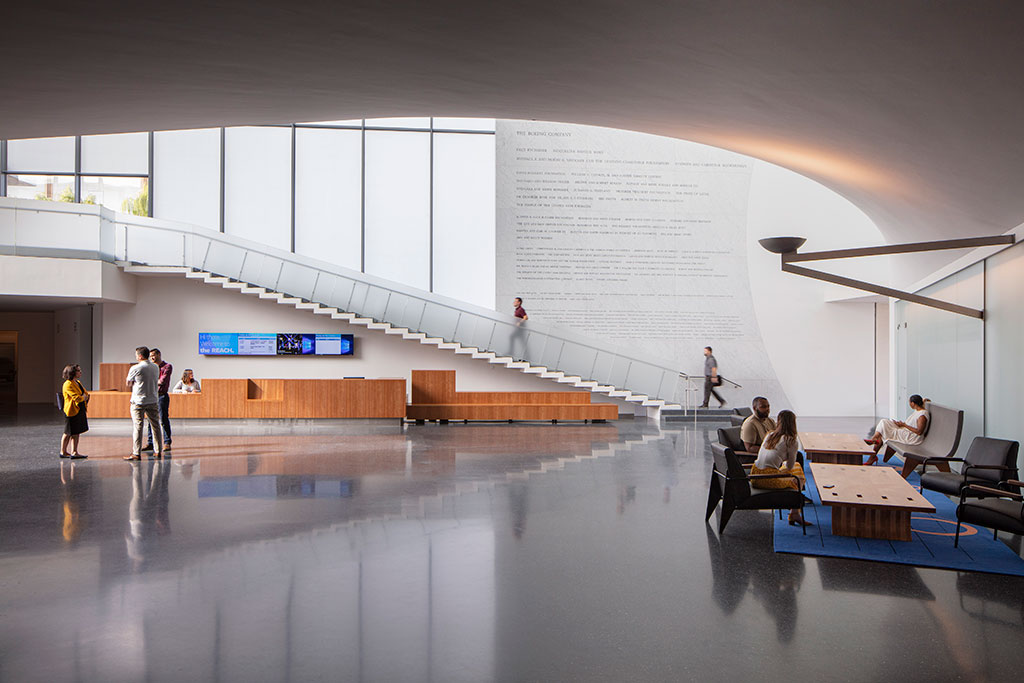
Photo credit: © Richard Barnes
FACTS: The REACH at The Kennedy Center for the Performing Arts
Construction period: November 2015 – September 2019
Building area (square feet): 72,000sf interior space
Landscape area (square feet): 130,000 sf of gardens with reflecting pools and pedestrian bridge connection to river front:
Program:
Welcome Pavilion
Skylight Pavilion (events space) 144 seat performance theater
Rehearsal / Performance spaces (4)
River Pavilion Café and exterior performance space
Pre-function spaces
Makerspace with exterior mahogany deck
PT109 (meeting room)
Hammersmith Lounge Classrooms (2)
Coffee bar and catering Kitchen Production offices
Simulcast lawn Perennial gardens Ginkgo grove
Bus parking
New garage entry
Sustainable features:
Green Roof, reduces storm water run-off, limits heat island effect
27 geothermal wells used for radiant heating and cooling
High performance glass and thermally insulated façade
Operable translucent and clear windows for natural ventilation Extension natural daylight throughout
Daylight control for artificial lighting
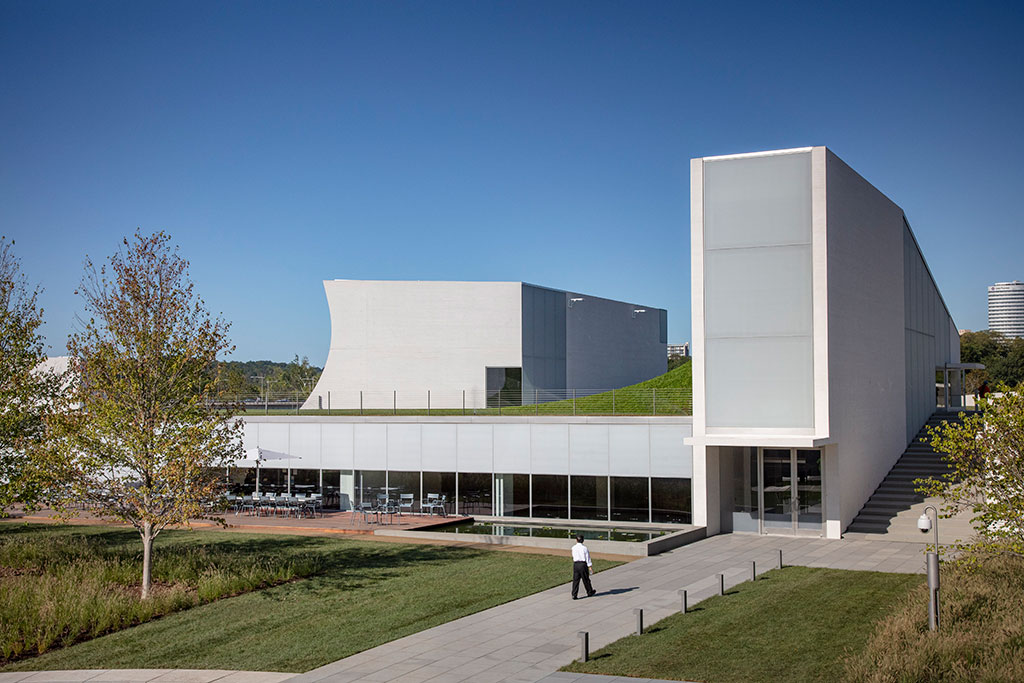
Photo credit: © Richard Barnes
Structure:
Recycled fly ash replaces 40% of cement content in concrete mix
Pavilions: white titanium concrete
Interior walls: reinforced concrete
Green roof deck: post-tensioned reinforced concrete with bubble deck voids
Large studio space: Saw tooth post-tensioned reinforced concrete with bubble deck voids
Interior finishes:
White stained Board form concrete
Custom acoustical crinkle concrete
Terrazzo and terrazzo ground concrete floors
End-grain cherry wood and ebonized ash wood floors
Sprung Douglas fir and Marley flooring in rehearsal and performance spaces
Cherry wood oversized acoustical doors and cabinetry
Smooth acoustical plaster
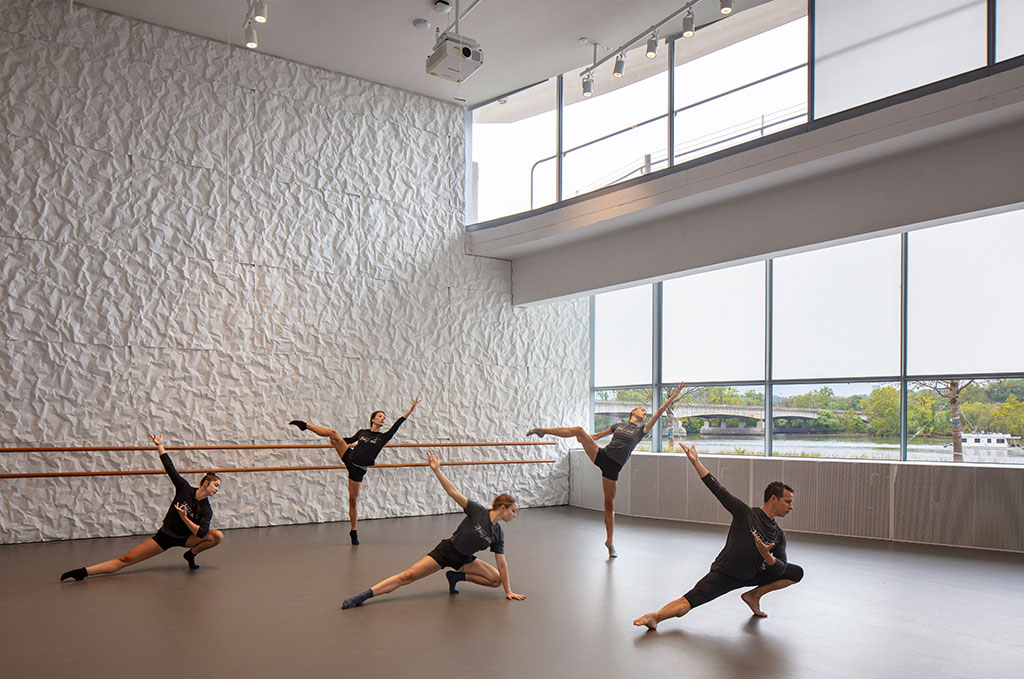
Photo credit: © Richard Barnes
FACTS: Crinkle Concrete
Construction period: November 2015 – September 2019
Vertical wall areas (square feet): 11,570 sf
Spaces
Studio J: Rehearsal / performance space
Studio F: Rehearsal / performance space
Studio K: Rehearsal / performance space
Justice Forum: 150 seat performance theater
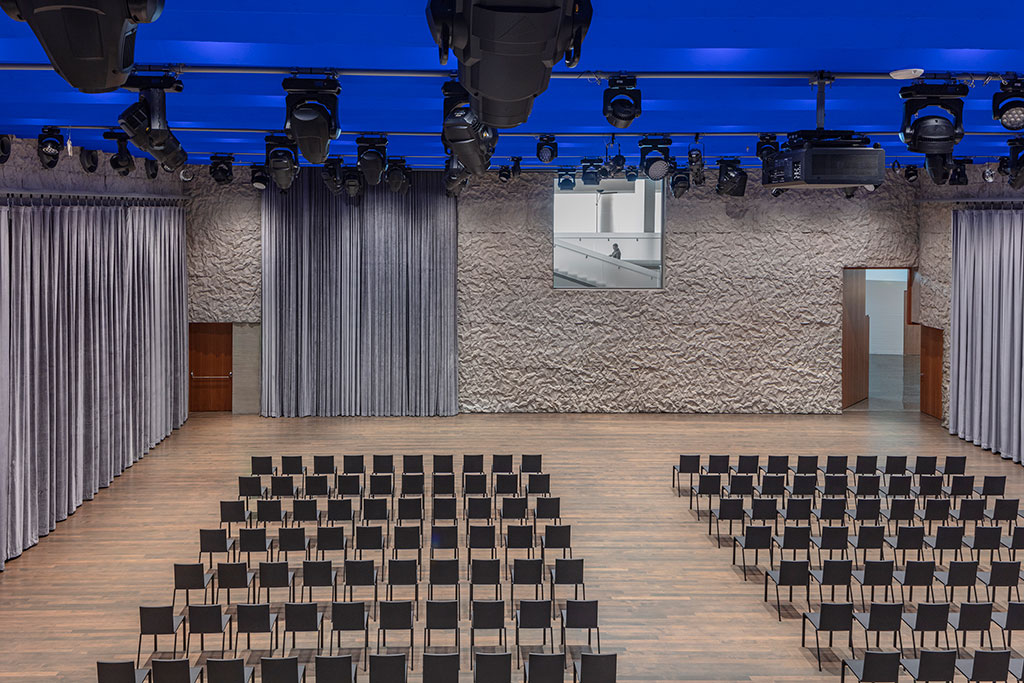
Photo credit: © Richard Barnes
Construction
Reinforced cast-in-place concrete with a 3” deep crinkle texture made using custom elastomeric form liners that are molded from crinkled metal sheets
Acoustical properties
Sound diffusion / flutter echo mitigation
Finishes
White stained concrete in Studio J and Studio K
Raw concrete with a matte sealer in Studio K and Justice Forum
Project team
Design Architects: Steven Holl Architects
Architect of record: BNIM
Structural Engineer: Silman
Concrete Consultant: Reg Hough Associates
Acoustical Consultants: Harvey Marshall Berling Associates
Project Manager: Paratus Group

